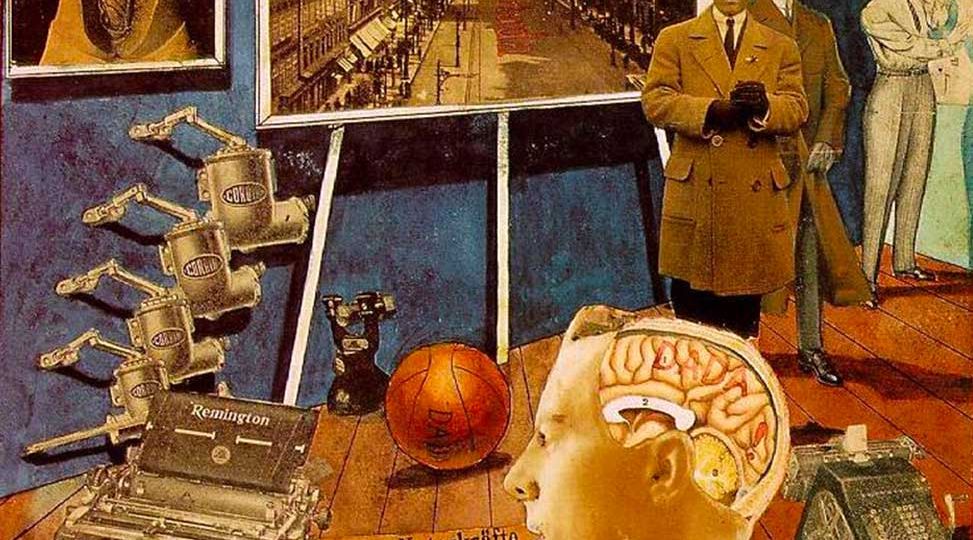
Double Introverts, Dual Extraverts
Quantitative Typology – A New Route to the Function-Attitudes
Douglass J. Wilde, May 2, 2012
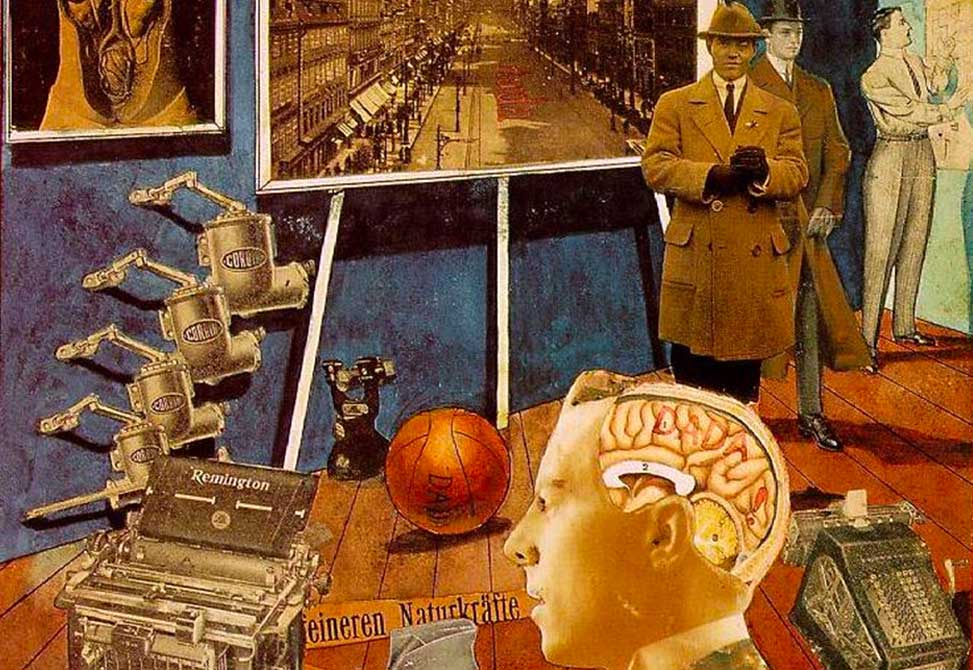
At the time, the only method for finding an individual’s preferred function-attitudes (the Jungian functions of Sensing, Intuiting, Thinking, or Feeling, in their attitudes of extraversion or introversion) was the set of five steps given in the MBTI® Manual (1998, p. 30) for identifying the hierarchy of functions of each type. These MBTI® scoring rules, referred to here as the type dynamics steps, involve examining the four-letter type code and finding from it the extraverted or introverted dominant and auxiliary functions (Steps 1-4), from which are inferred the tertiary and inferior functions (Step 5). These rules involve only the MBTI® categories, not their associated scores. I found these steps too cumbersome to apply one by one to fifty students, so I sought another approach involving the scores that I could incorporate into a simple computerized numerical spreadsheet such as Excel. It did not occur to me when I first started using the scores that my approach might produce a different result from the standard method.
MBTI® certification programs tell prospective practitioners never to use these scores because it is possible to misuse them as suggesting ‘strength’ of preference. The formulas developed here do not do this, however. They simply constitute a more reliable way of determining the correct function-attitude pattern. The procedure given here is the first to exploit the MBTI® instrument’s numerical information, heretofore overlooked, to advance the use of function-attitudes in personality theory. For this task it is not enough to know just the MBTI® categories E/I, S/N, T/F, and P/J. You must also use the associated computer-generated scores, known as the ‘preference clarity indices’ (pci’s). The pci’s are the difference between the responses for the two poles of each dichotomy. For example, a score of 19 for N and 11 for S gives a pci of 8 (19 minus 11) for Intuiting, and we can infer a pci of -8 for Sensing. The pci’s may then be discarded, and need never be regarded as indications of preference ‘strength,’ any more than they have been in the past. The calculations involve only plugging the scores into simple formulas that can be calculated either automatically, using an easily constructed spreadsheet, or manually.
The pci scores being the only numbers available, I decided to use them to construct a numerical approximation to Jung’s already well known function-attitude model. The table below shows my numeric calculations for one actual respondent (‘Isaac’) whose Form M pci’s were I 30, N 8, T 26, and J 6. The formulas show how to calculate composite values (CVs) that reflect both the function and its attitude. The type dynamics rules would assign an INTJ type code to this individual, implying that Ni is dominant with Te auxiliary. That scoring method, however, does not give enough weight to the high score for Thinking, and particularly for introverted thinking (Ti). My calculations produce the highest scores for two introverted functions—Ni and Ti. Whether we call this outcome ‘double introvert’ or ‘same-attitude auxiliary,’ we cannot ignore the high scores for both introverted intuition and introverted thinking.
The eight rectangles of the table each represent one function-attitude—for example, extraverted sensing (Se) in the upper left. Half of the rectangles, those involving Sensing and Intuition, are grouped into the perception (P-) domain on the left, the other four involving Thinking and Feeling are collected into the judgment (J-) domain on the right.
Each rectangle contains a spreadsheet formula automatically calculating a Composite Value for that function-attitude. Each formula achieves its maximum Composite Value when the relevant pci scores are at their maximum values. For the MBTI® Form M, the maximum computer-generated score for each function or attitude is 30. You can verify that Se’s composite value, for instance, is indeed 30 when its pci scores for E, S, and P are all 30. We can show this with a hypothetical individual whose responses to the instrument are extreme, with the highest possible score for extraverted sensation—call her ‘Sophia Sensation.’ For Sophia, the Composite Values for Ne and Si go to zero and for Ni (Se’s function-attitude opposite), the CV is -30. Note also that the T/F dichotomy is a non-factor here, since this hypothetical individual’s responses indicate zero inclination for judging of any kind. The T and F responses are therefore ‘neutral,’ i.e., both T and F =0. For Se therefore, this construction generates the scores for Jung’s function-attitudes accurately from the relevant MBTI® scores. And it works equally well for the other seven function-attitudes.
This system of scoring and the standard system produce identical results when all pci scores are zero. A function or attitude score is zero for a dichotomy whenever the respondent’s answers tally equally for the two poles (for E these are extraversion and introversion). And if E, I, S, N, P, and J all = 0, then all the Composite Values for the P-domain function-attitudes are also zero (i. e., Se, Ne, Si, and Ni = 0). Similarly in the J-domain if E, I, T, F, P, and J = 0, then Te, Fe, Ti, and Fi = 0. The function-attitude formulas, therefore, fit perfectly, both at the extreme values of the two models where responses indicate maximum clarity of preference, and also at their centers where the responses indicate no preference. In testing the extremes of possible scores using these ten combinations, we see that the Composite Values for the function-attitudes of Jung’s theory exactly match the pci scores of the functions and attitudes generated by the MBTI® assessment. Thus, this method of calculating scores reconciles the MBTI® four-letter type system with the eight-function-attitude system, and is the only approach, to my knowledge, that can claim to do so. Each rectangle contains a spreadsheet formula automatically calculating a Composite Value for that function-attitude. Each formula achieves its maximum Composite Value when the relevant pci scores are at their maximum values. For the MBTI® Form M, the maximum computer-generated score for each function or attitude is 30. You can verify that Se’s composite value, for instance, is indeed 30 when its pci scores for E, S, and P are all 30. We can show this with a hypothetical individual whose responses to the instrument are extreme, with the highest possible score for extraverted sensation—call her ‘Sophia Sensation.’ For Sophia, the Composite Values for Ne and Si go to zero and for Ni (Se’s function-attitude opposite), the CV is -30. Note also that the T/F dichotomy is a non-factor here, since this hypothetical individual’s responses indicate zero inclination for judging of any kind. The T and F responses are therefore ‘neutral,’ i.e., both T and F =0. For Se therefore, this construction generates the scores for Jung’s function-attitudes accurately from the relevant MBTI® scores. And it works equally well for the other seven function-attitudes.
Non-maximum response counts are weighted proportionately by CPP’s pci formulas, constructed to interpolate between the centers and the extremes. Thus in the example of Isaac in the table, whose scores are I 30, N 8, T 26, and J 6, the implied corresponding negative scores would be E=-30, S=-8, F=-26, P=-6. This results in a Composite Value for extraverted sensing of [(-30 – 6)/2 – 8]/2 = -13 as shown at the bottom of the Se square of the table. This negative score indicates that Ni, the function-attitude diagonally opposite from Se, will be positive with the same absolute value (Ni =13), so no further calculation is needed to find the Composite Value for Ni. Likewise, once any function-attitude has been calculated, we know that its opposite function-attitude has the same numerical value, but with the opposite (+/-) sign. So only four, not eight, computations are required, and they are easily carried out manually for an individual or using a spreadsheet with embedded formulas for a team. Results for the other six function-attitudes are shown in the remaining squares, the positive ones being shown in boldface.

It is important to note that the J-subsidiary Te 7 is considered to be statistically significant. This means that this individual has a noteworthy preference for extraverted thinking, even though his or her dominant is introverted thinking, and type dynamics theory would have us believe that such ‘double-thinking’ preferences cannot happen. The discovery and exploitation of previously hidden talents associated with subsidiary function-attitudes thus revealed is one of the most important contributions of this new quantitative method. Any client would certainly be interested in knowing about such personal potentials, currently hidden in the unexamined MBTI® data. Guidance counselors in particular can enhance their services by bringing subsidiary function-attitudes to light, provided they are statistically significant, and of course by exploring newly revealed dominant and auxiliary preferences as well.
These results squarely contradict, and in my opinion disprove, conventional type dynamics assumptions about ‘balance’ that lead in part to the previously assumed arrangement of the function-attitude sequence of innate preferences. Our example, Isaac, would be reported through conventional MBTI® interpretation as INTJ, and therefore expected by type dynamics theory to have a fairly high (tertiary) preference for introverted feeling (Fi). Whereas, my approach leads me to conclude that Fi is not developed in this individual, and it is Fi’s ‘opposite,’ Te, which plays the subsidiary J-domain role. And remarkably, the type dynamic steps wouldn’t even mention introverted thinking (Ti), which our quantitative analysis shows to be dominant. This oversight would distort the personality description, leading to inadequate career counseling and mediocre assignment to a team. Moreover, according to conventional type thinking, the MBTI® type with Ti dominant and N auxiliary is INTP rather than INTJ, making it another perplexing case for Personality Type in Depth’s recent “Question of the Day: INTJ or INTP?”
When I first noticed such discrepancies, I paid special attention to the students involved to see which prediction fit better. These observations involved several hundred students over the last fifteen years. Since it was soon apparent to me that the Composite Value predictions provided more reliable information than conventional MBTI® reports, I stopped using the standard scoring method entirely. The fraction of Stanford teams winning national awards tripled (Wilde, 2009, 2010) when CV analysis of the MBTI® results was used to create function-attitude-diverse teams, as compared to previously not taking personality type into consideration at all. Reynierse and Harker then published their statistical study of type dynamics behavior predictions, summarized in “The Case against Type Dynamics” (2009), concluding that the correlation was unacceptably poor. I took their study as further reason to believe that a better way of calculating MBTI® scores was needed.
That’s how the study of teams led to the discovery of quantitative typology. Here’s hoping this story inspires further examination and quantification of the function-attitudes. I would enjoy hearing from anyone who cares to comment, ask questions, or share their experiences with this approach. For a more in-depth analysis of my method and its consequences for practitioners, career counselors, and management consultants, see Jung’s Personality Theory Quantified (Wilde 2011).
References
Haas, L. and Hunziker, M. (2006). Building blocks of personality type. Huntington Beach, CA: Unite Business Press.
Jung, C. G. (1921, 1971). Psychological types. Princeton, NJ: Princeton University Press.
Myers, I. B., McCauley, M. H., Quenk, N. L., and Hammer A. L. (1998). MBTI® manual: a guide to the development and use of the Myers-Briggs Type Indicator®. Palo Alto, CA: Consulting Psychologists Press.
Reynierse, J. H. (2009). The case against type dynamics. Journal of Psychological Type, 69:1.
Shumate, C. and Hunziker, M. (Oct 2011). “Is it INTJ or INTP?” Personality type in depth.
Wilde, D. J. (2009). Teamology: the construction and organization of effective teams. London, England: Springer.
Wilde, D. J. (2010, February). Personalities into teams. Mechanical Engineering Magazine, 39:1, 20-24.
Wilde, D. J. (2011). Jung’s personality theory quantified. London, England: Springer.


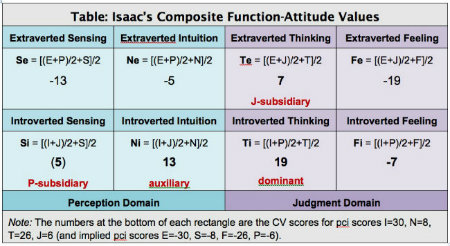


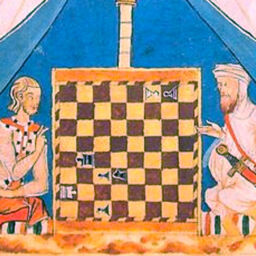
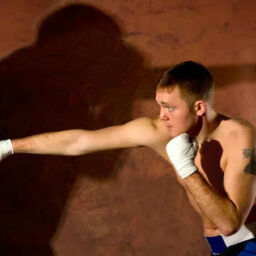







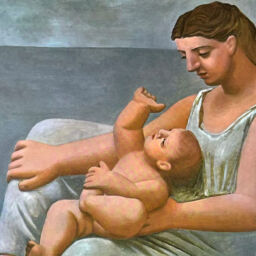




I should note that I’m well aware from an empirical point of view, a lot of what I said above might not be relevant — I think empirically, the MBTI correlates quite well with the Big 5, and we shouldn’t just be acknowledging “doubles” but also simply noting that the scales seem to measure dimensions more than discrete types.
However, for those interested in the odd psychological/philosophical interface Jung began thinking about in Psychological Types, some of these musings might be helpful. After all, many use the MBTI as an indicator to Jungian type, even if this is technically optional, so it can be of interest to see how “doubles” fit in with Jungian theory. Which was what my previous post is meant to address. Just clarifying.
I actually think depending on what one means, “doubles” are the default. The way Jung was originally theorizing, introversion/extraversion were just attitudes of consciousness. One colored consciousness, the other the unconscious. Thus, to the extent one had a well-developed auxiliary, it would more or less have to be the same-attitude.
This is basically the view most dimensional/dichotomies approaches would yield, and Jung’s original approach was closest to this (there were 4 scales: intro-extra, feeling-thinking, intuition-sensation, rational-irrational that you could more or less pick from and assemble the type).
However, this is a very simple model, and it leaves the auxiliary much more open than one may realize. By the very theory, it’s unclear to what extent one can regard the auxiliary as conscious: Jung seems to refer to the aux/dom pair as the “conscious functions” from time to time, despite his apparent warning that only ONE can be sovereign and *truly* conscious.
One can make either argument: that the aux must subordinate to the dom, as it pairs seamlessly with it, and thus would take on the same attitude when strengthened….or, one could make the argument that the aux, to exert its independent principle (perception if dom is judging), ought to work in the opposite attitude to be differentiated.
I’ve come to believe that there is some admixture of these views that really works.
My tendency is to go somewhat more with the aux-opposite-attitude view nowadays (although I still think an admixture is best) also for other reasons, in that I think e/i functions a little like rational-irrational — there’s a sense in which it defines two opposing poles, but also in a sense they are complementary.
In particular, just like perception and judgment pair naturally, so do the outer and inner (the most caricatured version of this pairing is that equations are produced internally and the physical objects present themselves from the outside, and they fit together in physics). I don’t think it’s easy to get by with either a wholly solipsist view or a totally externally oriented view, at least in how one understands reality.
So really I think whether we’re double-introverts/double-extraverts or e/i-alternating depends on the greater particulars of what one means by those things, and that a neglecting to describe further has led to much of the confusion. If one takes the more personality-oriented less-cognitive versions of these terms, like introverts tending more to reflect and so on, I think one can easily be double-introverted without being unhealthy.
To simplify things…I agree completely that there are double extraverts and introverts. Regardless of testing, one only has to personally witness a few examples of close companions who are double. My best friend clearly has introverted intuition as his dominant function and introverted thinking as his auxiliary function—just as, I believe, Martin Heidegger had. My business partner definitely has extraverted intuition as his dominant function and extraverted feeling as his auxiliary. I know these two personalities and how they function intimately. I haven’t studied your testing method or experiment, but have witnessed such examples in my life. I think doubles are rare, but do exist. If this is the case, there are a number of types that are left out of MBTI.
Tara, you might want to read “Jung’s Typology in Perspective” by Angelo Spoto. He has a brief discussion regarding typological patterns that are different from the normally expected pattern. As Jung said, “Every individual is an exception to the rule. Hence one can never give a description of a type, no matter how complete, that would apply to more than one individual, despite the fact that in some ways it aptly characterizes thousands of others. Conformity is one side of man, uniqueness is the other.” (CW 6 para 895)
To Peter, Taya and Paul:
Peter: In other correspondence you mention developing another questionnaire in some way better than the MBTI at scoring E/I, etc. If so, the spreadsheet will give a better estimate of the FA computed values, which should be useful to you for describing your clients in Jungian language. If your value ranges are not 30, just scale them to your ranges or use percentages on the spreadsheet as in my previous reply to Paul.
Taya: Although I don’t have your MBTI scores, I can confirm that your pattern Ni Ti Ne Fi can be generated by the scores I30, N30, T 6, P12 -> Ni20, Ti14, Ne11, Fi 8. Aside from this, I only have one quibble about what you said. I would say “rationalized” instead of “rational” in your description of the traditional system, for the “balance principle” is not at all rational. It was imagined (rationalized) by Katherine Briggs – not based on any empirical evidence — and incorrect whenever P or J is less than E or I, as it is for you and all doubleverts.
Paul: Go for it!
Whether”by the book” (MBTI Manual), “by the numbers” (Doug’s CVs)’ or both, the general trend of our discussion seems to point to the possibility of discovering a model that could reconcile multiple viewpoints regarding both teams and type development. Hmmm… I have some ideas… Will get back to you. 🙂
Most interesting. I am not a MBTI professional, so my interest is purely personal. I have been studying the functions trying to validate if my INTP result is correct, and if I indeed use mainly functions Ti Ne Si Fe. Well, I could not decide on sensing and intuition, but I decided that I use Ti and Fi. Which it seemed is nto possible. Luckily I have the scores of my MBTI test, and in your spreadsheet, Dr. Wilde, the 4 biggest numbers were in Ni Ti Ne Fi – others were negative numbers. In the traditional system people are wired in a very rational and systematic way – if this is introverted the other is extroverted. To me it makes much more sense to think that there are countless number of combinations in people. I suppose in my case it sounds appropriate to say that I don’t have data to back my thinking, I just have a hunch ;).
Sorry, folks; I misread Bob’s range for N as 30 instead of 26, leading to my using N(87%) instead of the correct N(100%). The results for Te and Ti are unaffected, but the p-domain results should be Ni(83%) and Ne(18%) instead of 76% and 11%. Fortunately this does not affect the mode pattern: Ni dominant and Te auxiliary — a close call!.
Please excuse me if I do not respond to Paul’s and Bob’s questions about computed values and development. I am neither a psychologist nor a type professional, and I had better just stick to the Systems Analysis concepts I used to straighten out the mapping of the MBTI scores to the Jungian model. Whatever you professionals are doing now can only be improved by better handling of the questionnaire data. At least now you won’t have to be rationalizing any errors that happen to come from the type dynamics steps.
I’m looking forward to what Doug has to say about what his scoring routine indicates regarding development. While the MBTI Manual does indicate a development sequence that follows the order of the preferences there are two other ideas that I find worthy of consideration. One is from Angelo Spoto in which he posits that we will develop the function-attitudes we need to develop in order to survive the situations we are in when those situations do not support developing the ones we would naturally be developing. Life is often cruel when it comes to supporting the development of one’s dominant or auxiliary. This often reveals itself in a person being confused as to a best fit type code. Many times their most natural perceiving and judging functions will be in the same attitude. Some times even their third most developed function is in that same attitude creating a situation where a person often finds themselves out of psychological balance. The second is from John Beebe in which he posits that after developing the first,second and third we need to develop the seventh before we can develop the fourth. I’ve also heard Beebe speak of how the sixth can hijack the second and impede its development. I do not believe the issues Spoto and Beebe raise are addressed in the scoring of any instrument. I believe it is only through disclosure bythe client that we can start to gain insight into how developed a function-attitude might be for a person.
Thank you, Doug, for confirming that one can convert any scale to a proportional equivalent to generate CV sorting results. Thank you, Bob, for reminding me what the ranges are for the scales on the Self-Scorable MajorsPTI which I ordered and will be using with my graduate healthcare students this year. Thank you, Mark, for sending me an xlsx file of Doug’s Worksheet you had that I could use with Office 2012. Following your instructions, Doug, for generating proportional equivalents on the ranges Bob sent me for the Self-Scorable MajorsPTI and using Mark’s xlsx file, I was able to generate the CV sorting results successfully just as you did. This is a very fascinating and workable idea, Doug. Am I correct in suggesting that CV results may be related in a predictive way to an individual’s lifepath of development through the 8 FAs compared to the “standard” predictions theorized in the MBTI Manual?
Paul’s important questions are answered in Section 3.3 “Normalization” on p. 19 of my book “Jung’s Personality Theory Quantified”. Paul, convert your four Majors scores to percentages of the ranges by dividing by the range and multiplying by 100%. For example, your N(26) would be rounded to (26/30)X100% = 87% of the N range of 30. Then enter these [I(50), N(87), T38), J(80) for you] on the spreadsheet to obtain [Ni(76), Ne(11), Te(27), Ti(17)]. Considering the FA scores below 20% to be insignificant would give Ni dominant and Te auxiliary, in this case just what the type dynamics steps would predict — by fortunate coincidence. Note that the final result comes from sorting rather than measuring. The calculations just gave Jungian information to sort with.
The MajorsPTI is not scored on a 30 point scale per dimension. On the self-scorable the E-I maximum is 20 points, the S-N and T-F maximums are 26 points, and the J-P maximum is 30 points. If using the electronic version of the MajorsPTI the maximums can increase 10 points for each dimension if the initial scores for each preference on that dimension are within 3 points of each other. This increase is accomplished by asking the client to respond to 5 additional items on the dimension.
Paul,
You can find the working spreadsheet for Doug Wilde’s formula within the editorial in the center column of this issue, entitled “Q: Are Type Preferences Balanced?” Clicking on the blue highlighted words in the first paragraph will download the Excel sheet to you.
Regarding your question re using the approach with the Majors pti scores: I know that the formulas are specific for the weighted, computer-generated scores for the MBTI. They do not generate the same results, for example, for the non-weighted simple response-count results one gets from the self-scorable version of the MBTI form M. I’m guessing that it would be similarly skewed by the Majors scoring system, unless that is based on a system where the maximum possible score for each dichotomy is 30, as is the case for the computer-scored form M –and I’m not sure whether this is the case or not. I think that Dr. Wilde would feel that it could be adapted, however; and he may be able to further elaborate when he sees your comment.
-Mark
Please, post for everyone since others may have the same questions or notify me via email to pdobies@westernu.edu Thanks!
Where can I get Mark’s working spreadsheet for calculating Douglass’s Composite FA Values so I can explore the results with my healthcare students? Also, has Douglass or anyone applied this approach to the Self-Scorable MajorsPTI which I will be using this coming year instead of the Self-Scorable MBTI Form M at Western University of Health Sciences?
Just met Bob McAlpine over the phone who emailed me this link; would very much like some answers to my questions, thanks in advance.
Paul I(10) N(26) T(10) J(24) from the Self-Scorable MBTI Form M
[…] (Study 6). There were no reversals, and no effects were contradictory. Futhermore this article on Double Introverts, Dual Extraverts seems to indicate that the type dynamics rigidity may not be all that factual either in this new […]
I appreciate your new model and am intrigued by a potentially new approach to type dynamics. I am going to use the model to review several of my previous clients’ reports and see how the results line up with what I have observed and learned about these clients over the past few years of working with them.
You have also provided some interesting resources on type that I can review as well. Thanks for sharing your model.
I am not troubled by the “tautology” Dawson observes, which is a by-product of double introversion and occurs even when the pci score of Introversion I is small, as long as it exceeds J’s score. To banish this tautology, just reverse the I and J scores (I=6, J = 30). The resulting ambiverted personality will have extraverted thinking Te19 greater than Ti 7, along with Ni13 as before.
In Dawson’s spirit of playful experimentation, try also interchanging the T and N scores. Then (I 6, N26, T 8, J30) will have Ni > Te with both subsidiary f-a’s (Ne and Fi this time) slight, a pattern that the type dynamics steps incorrectly claim would hold for all INTJs, even “Isaac”. So beware! Be-e-e-e-ware!
By the way, the illuminating spreadsheet should be credited not to me, but to modest super-editor Mark.
Although Dr. Wilde’s model offers a unique perspective on MBTI and FA, I am concerned that the formula is largely tautological. Intuitive thinkers with a strong preference for introversion will always display a higher score for Ti vs. Te.
Using Isaac (the case study cited above), download Dr. Wilde’s spreadsheet or create your own. Watch how Te/Ti composite values change as you increase the J pci up to a maximum value of 30. Te is never greater than Ti. At J=30, the CV for Te and Ti are both equal to 13. (Fe and Fi equal -13). While I would be willing to consider the possibility that super introverted INTJs always develop Te/Ti concurrently, I am skeptical of a model that predicts a disproportionately high percentage of double introverts (and double extroverts for I=0).
I use the f-a computed values (c.v’s) not to measure, Sharna, but always to SORT. The c.v. signs sort out the preferred f-a in a pair in the same way you (unconsciously perhaps) use MBTI score signs to find the preferred category for each pair. Thus my exemplary “Isaac” would pick N over S because of his S = -8 and N = 8. For MBTI categories this operation is so trivial that you probably haven’t noticed doing it. For f-a’s however the sorting operation is “in-your-face” because each f-a depends on three MBTI variables and so needs a calculation to find the c.v. Once the c. v. sign identifies the preference, the numerical value is still needed, not to measure development, but to express consistency in sorting. Thus for “Isaac” Ni13 indicates moderate clarity for Ni, as does N 8 for his MBTI S/N pair. I display the c. v’s only to exhibit f-a consistency in sorting, never to measure development.
My sincere thanks to you and Bob for bringing up this subtle and easily misunderstood point, potentially an obstacle to the understanding and acceptance of my function-attitude computations.
Doug I am afraid that I agree with Bob, this seems like fun and is interesting but not an accurate reflection of type dynamics. Remember type sorts, it does not measure an amount (unlike trait theory). If we take two individuals, one with Intuition as a dominant function and one with intuition as a tertiary function there is nothing to say that the tertiary function in one individual couldn’t actually be more developed than the dominant function in another. Going back to basics and handedness no matter how much you prefer using your right/left hand it doesn’t mean that your writing is any good!
It appears to me that Doug views the scores as measures of the quantities of preferences or strengths of preferences instead of consistency in sorting between preferences. He also indicates the scores provide information relative to type development without providing any rationale as to how he can make such an assumption. Without information that explains why the scores can be interpreted in the manner Doug is doing I’m sorry to say that I must view the process as only a fun mathematical exercise.